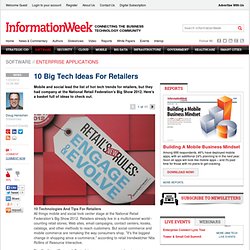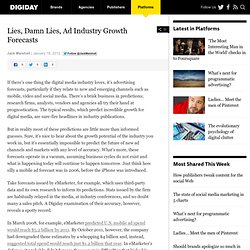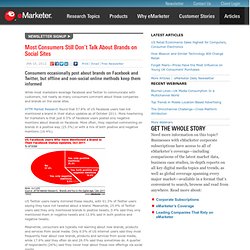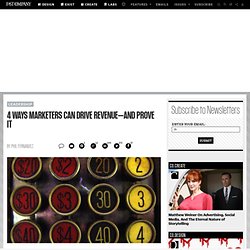

Shoply Aims To Socialize Ecommerce, Raises Seed Funding From Top Notch Investors. 10 Big Tech Ideas For Retailers. Mobile and social lead the list of hot tech trends for retailers, but they had company at the National Retail Federation's Big Show 2012.

Here's a basket full of ideas to check out. 1 of 11 10 Technologies And Tips For Retailers All things mobile and social took center stage at the National Retail Federation's Big Show 2012. Retailers already live in a multichannel world--counting retail stores, Web sites, email campaigns, contact centers, kiosks, catalogs, and other methods to reach customers. But social commerce and mobile commerce are remaking the way consumers shop. The Big Show "Engage & Evolve" theme encourages retailers to meet customers on Facebook and Twitter as well as through mobile apps that add brand value and bring shoppers back--no matter where they may be. Augmented reality is another emerging tech theme in retail.
More Insights. Lessons Learned from the 2011 Shopping Season. Seasonal and cultural events are circled on the calendars of brand marketers the world over.

These events are magnets for consumer attention and ripe for appropriation by big brands. Television, out of home, radio and newspapers have always had a role in the marketing mix, but social media has only been recently integrated into the typical marketer’s campaign planning routine. As part of this integration, there are always questions as to whether brands can effectively direct the conversation in their social media communities and further their goals. Using our Social Business Intelligence tools, Dachis Group recently extracted data on ecosystem activity for major retail brands around the Black Friday 2011 holiday period. We worked to correlate that data with marketing tactics from these brands to understand how various tactics impacted the specific activity within respective brand ecosystems. A summary of our findings is shared below. Click here to access the full report. Lies, Damn Lies, Ad Industry Growth Forecasts.
If there’s one thing the digital media industry loves, it’s advertising forecasts, particularly if they relate to new and emerging channels such as mobile, video and social media.

There’s a brisk business in predictions; research firms, analysts, vendors and agencies all try their hand at prognostication. The typical results, which predict incredible growth for digital media, are sure-fire headlines in industry publications. But in reality most of these predictions are little more than informed guesses. Sure, it’s nice to hear about the growth potential of the industry you work in, but it’s essentially impossible to predict the future of new ad channels and markets with any level of accuracy. What’s more, these forecasts operate in a vacuum, assuming business cycles do not exist and what is happening today will continue to happen tomorrow. Take forecasts issued by eMarketer, for example, which uses third-party data and its own research to inform its predictions.
Most Consumers Still Don’t Talk About Brands on Social Sites. While most marketers leverage Facebook and Twitter to communicate with customers, not nearly as many consumers comment about these companies and brands on the social sites.

AYTM Market Research found that 57.8% of US Facebook users had not mentioned a brand in their status updates as of October 2011. More heartening for marketers is that just 0.5% of Facebook users posted only negative mentions about brands on Facebook. More often, they reported commenting on brands in a positive way (25.3%) or with a mix of both positive and negative mentions (16.4%). US Twitter users nearly mirrored these results, with 61.3% of Twitter users saying they have not tweeted about a brand. Meanwhile, 25.4% of Twitter users said they only mentioned brands in positive tweets, 0.4% said they only mentioned them in negative tweets and 12.9% said in both positive and negative tweets. 4 Ways Marketers Can Drive Revenue.
It’s hardly breaking news that marketing leaders have become more empowered–-and their results, more measurable--than ever before.

In fact, any good marketer these days should be able to answer questions like these in his or her sleep: “How many page views did your latest white paper garner?” “How many sign-ups resulted from your latest Twitter contest?” “How ‘engaging’ was last week’s webinar?” But I have one last question for you: How much revenue did each of those activities generate? [Insert record-scratch halt here.] Now you’re thinking, “Revenue? Well, I hate to break it to you, but that answer isn’t good enough anymore. Now, imagine being able to answer that last question absolutely down to the penny. So, what can marketers do today to drive revenue and earn a coveted seat at the revenue table? 1. 2. It’s time to establish an infrastructure in which sales and marketing are fully integrated and equally responsible for revenue generation.